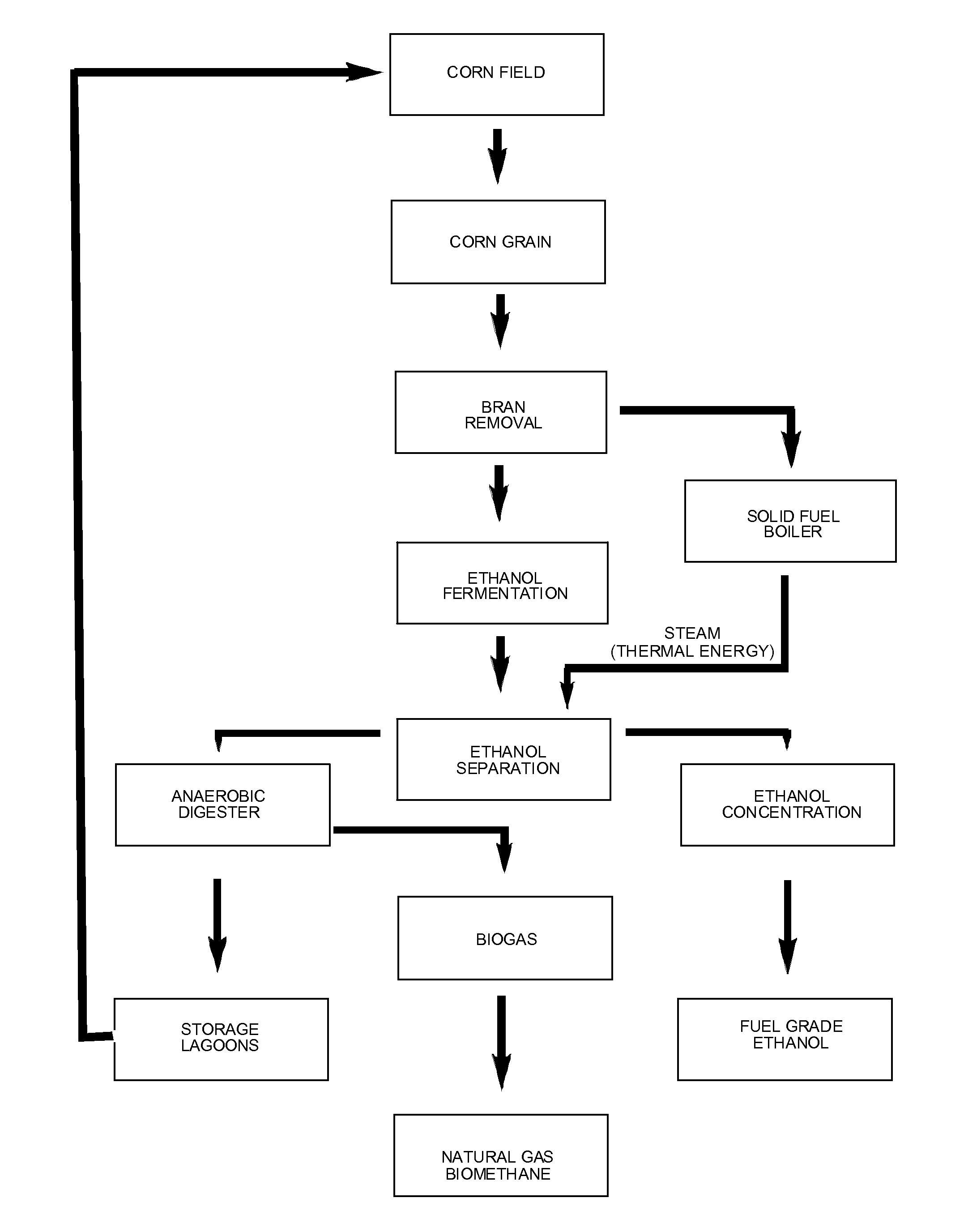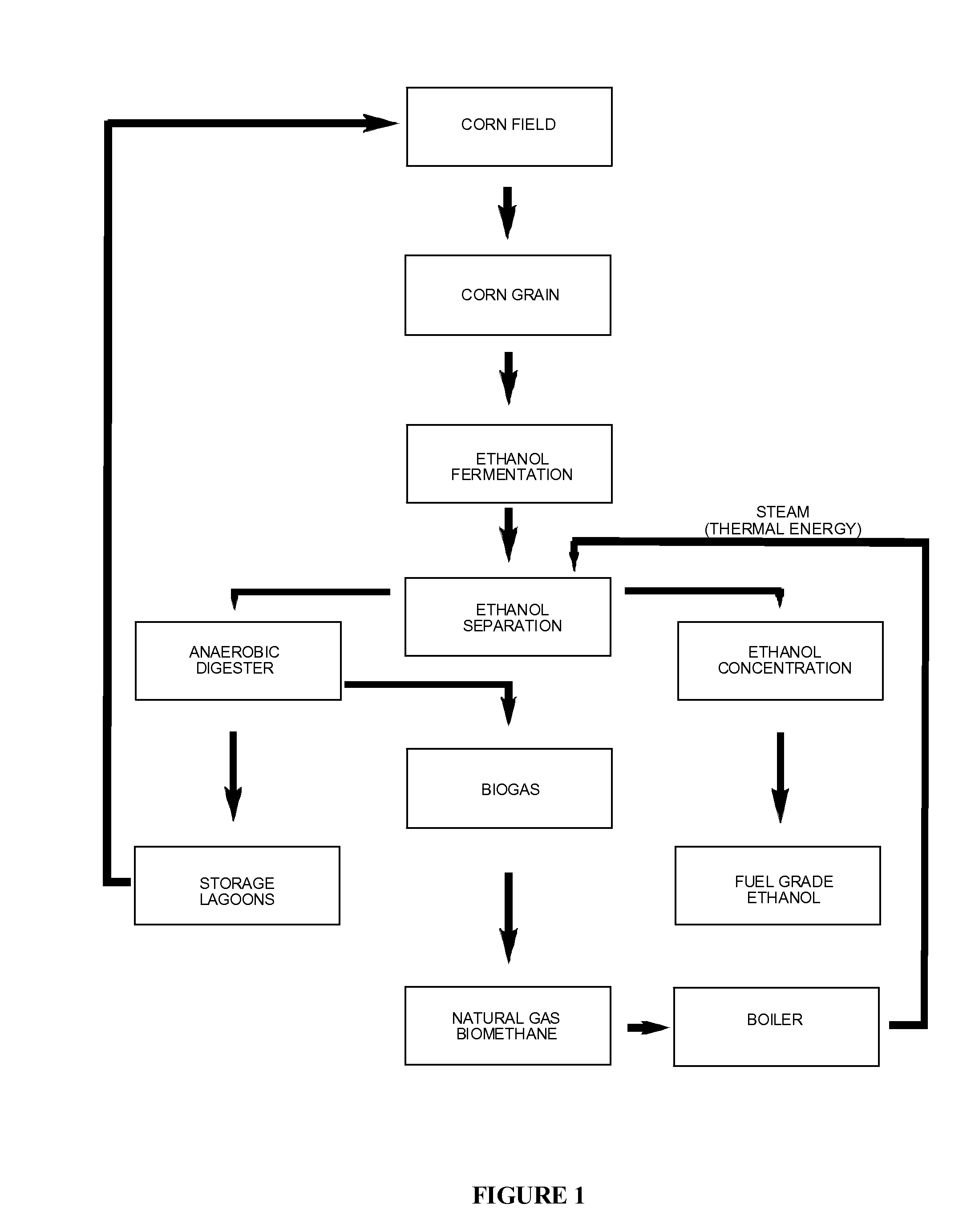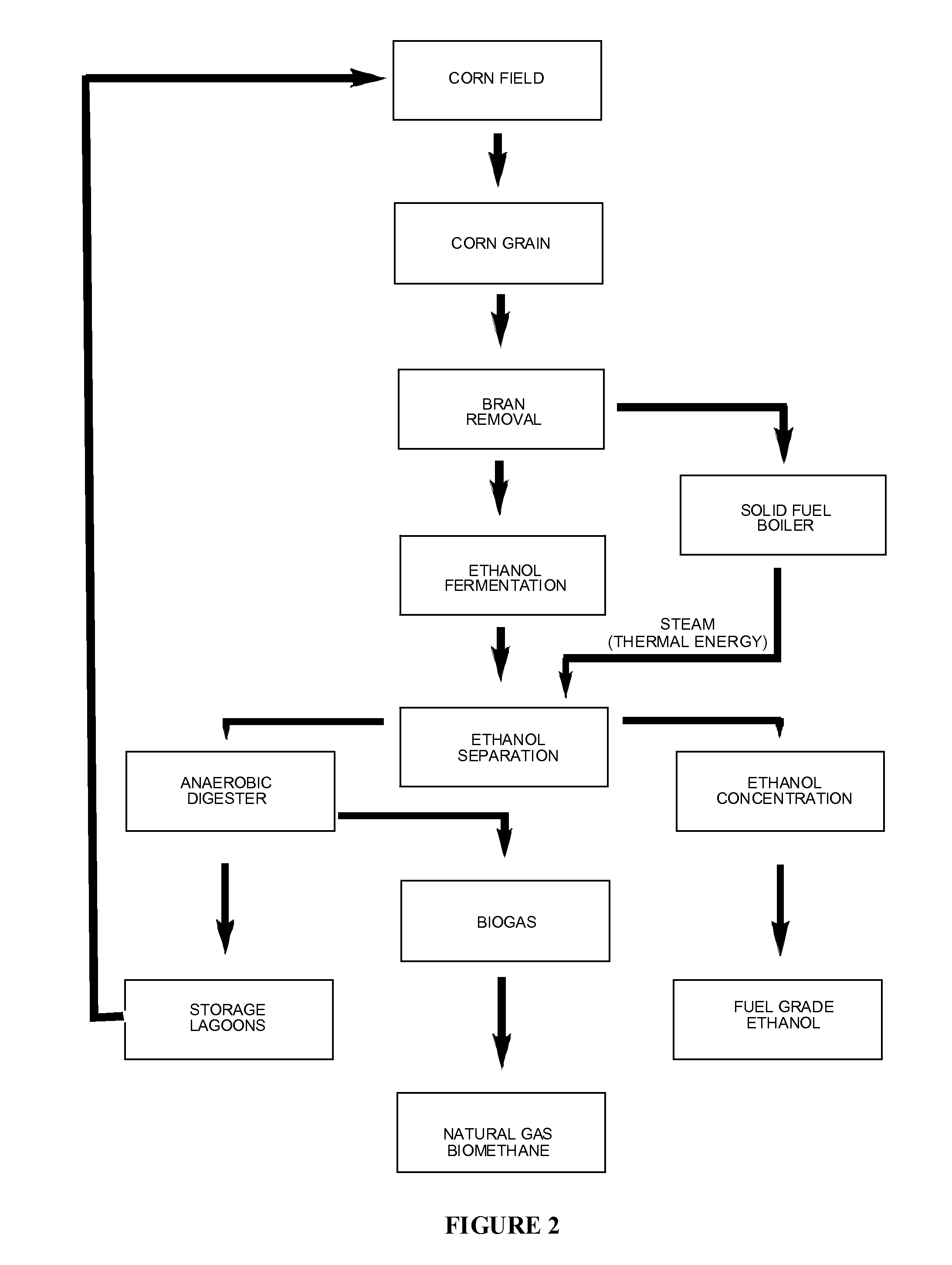Farm Scale Ethanol Plant
- Summary
- Abstract
- Description
- Claims
- Application Information
AI Technical Summary
Problems solved by technology
Method used
Image
Examples
examples
[0042]In one specific embodiment there is provided an energy-efficient cycle for the production of ethanol and optionally natural gas from sunlight and biomass comprising first producing or obtaining biomass, for example by planting and harvesting of either an annual or perennial crop or both, which crops may include, but are not limited to, corn, wheat, milo, oats, soybeans, hay, alfalfa, timber, sugar cane, algae and combinations thereof. If necessary tilling and fertilizing may also be performed as part of the obtaining of biomass. Other ways for obtaining biomass may include obtaining wood wastes or paper wastes on-site or from a secondary site, for example, to supplement the on-site production of biomass, or for use as the sole source of biomass.
[0043]After obtaining the biomass, it is converted to fermentable sugars through enzymatic conversion, acid hydrolysis, thermal cracking, or other processes that reduce cellulosic and hemi-cellulosic compounds to simple sugars. The simp...
PUM
 Login to View More
Login to View More Abstract
Description
Claims
Application Information
 Login to View More
Login to View More - R&D
- Intellectual Property
- Life Sciences
- Materials
- Tech Scout
- Unparalleled Data Quality
- Higher Quality Content
- 60% Fewer Hallucinations
Browse by: Latest US Patents, China's latest patents, Technical Efficacy Thesaurus, Application Domain, Technology Topic, Popular Technical Reports.
© 2025 PatSnap. All rights reserved.Legal|Privacy policy|Modern Slavery Act Transparency Statement|Sitemap|About US| Contact US: help@patsnap.com



